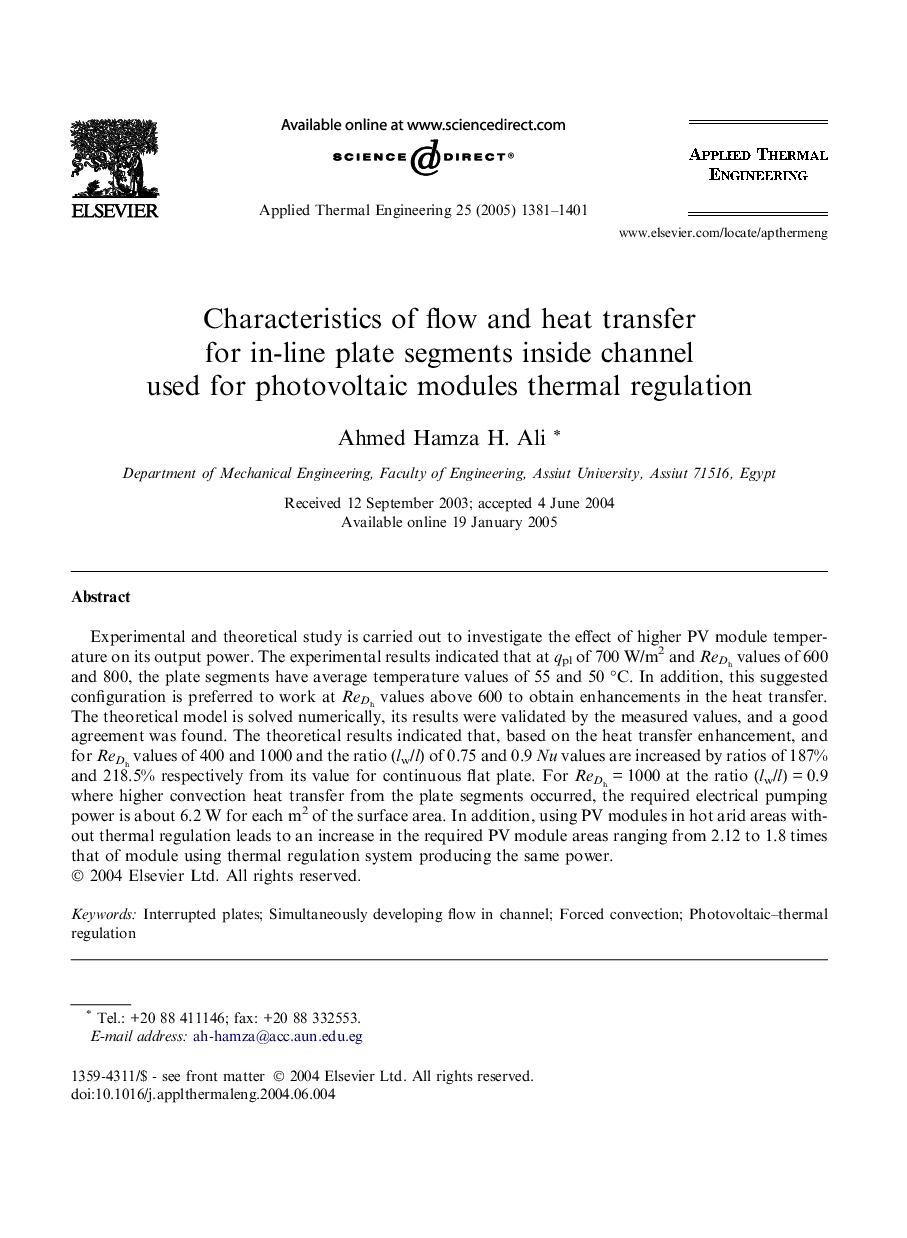| Article ID | Journal | Published Year | Pages | File Type |
|---|---|---|---|---|
| 9690336 | Applied Thermal Engineering | 2005 | 21 Pages |
Abstract
Experimental and theoretical study is carried out to investigate the effect of higher PV module temperature on its output power. The experimental results indicated that at qpl of 700 W/m2 and ReDh values of 600 and 800, the plate segments have average temperature values of 55 and 50 °C. In addition, this suggested configuration is preferred to work at ReDh values above 600 to obtain enhancements in the heat transfer. The theoretical model is solved numerically, its results were validated by the measured values, and a good agreement was found. The theoretical results indicated that, based on the heat transfer enhancement, and for ReDh values of 400 and 1000 and the ratio (lw/l) of 0.75 and 0.9 Nu values are increased by ratios of 187% and 218.5% respectively from its value for continuous flat plate. For ReDh = 1000 at the ratio (lw/l) = 0.9 where higher convection heat transfer from the plate segments occurred, the required electrical pumping power is about 6.2 W for each m2 of the surface area. In addition, using PV modules in hot arid areas without thermal regulation leads to an increase in the required PV module areas ranging from 2.12 to 1.8 times that of module using thermal regulation system producing the same power.
Keywords
Related Topics
Physical Sciences and Engineering
Chemical Engineering
Fluid Flow and Transfer Processes
Authors
Ahmed Hamza H. Ali,
